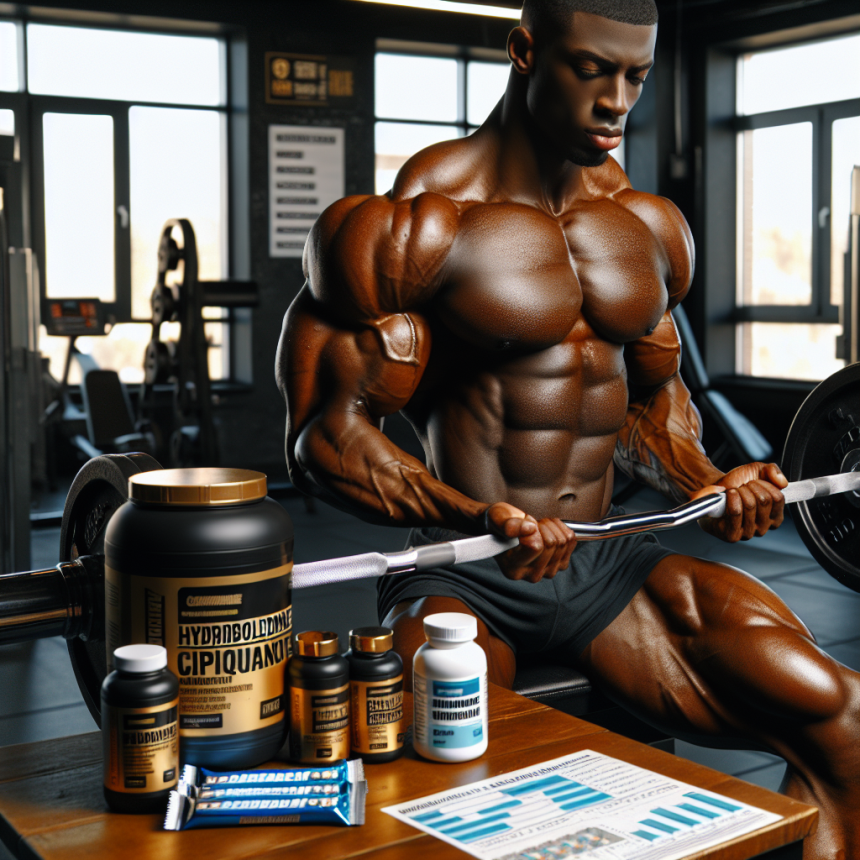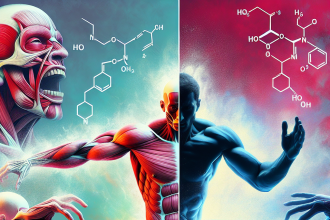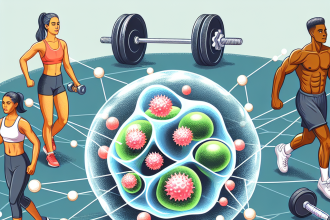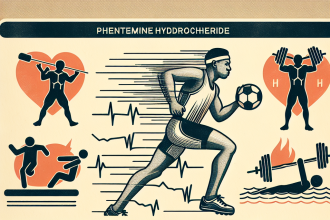-
Table of Contents
- Utilizing Dihydroboldenone Cipionate in Professional Bodybuilding
- The Science Behind Dihydroboldenone Cipionate
- Pharmacokinetics of Dihydroboldenone Cipionate
- Pharmacodynamics of Dihydroboldenone Cipionate
- Potential Benefits of Dihydroboldenone Cipionate in Professional Bodybuilding
- Risks and Side Effects of Dihydroboldenone Cipionate
- Real-World Examples of Dihydroboldenone Cipionate Use in Professional Bodybuilding
- Expert Opinion on Dihydroboldenone Cipionate
- References
Utilizing Dihydroboldenone Cipionate in Professional Bodybuilding
Professional bodybuilding is a highly competitive sport that requires dedication, discipline, and a strategic approach to training and nutrition. In recent years, the use of performance-enhancing drugs (PEDs) has become a controversial topic in the bodybuilding community. While some argue that PEDs are necessary to achieve the desired level of muscularity and definition, others believe that they pose serious health risks and should be avoided at all costs.
One PED that has gained popularity among professional bodybuilders is dihydroboldenone cipionate, also known as DHB or 1-testosterone cypionate. This article will explore the pharmacokinetics and pharmacodynamics of DHB and its potential benefits and risks in professional bodybuilding.
The Science Behind Dihydroboldenone Cipionate
DHB is a synthetic androgenic-anabolic steroid (AAS) that is derived from testosterone. It was first introduced in the 1960s and has been used in veterinary medicine to promote muscle growth in livestock. However, it has recently gained attention in the bodybuilding community due to its reported ability to increase lean muscle mass and strength without causing excessive water retention or estrogenic side effects.
Like other AAS, DHB works by binding to androgen receptors in the body, which then stimulates protein synthesis and muscle growth. However, what sets DHB apart from other AAS is its unique chemical structure. DHB has a double bond at the carbon 1 and 2 positions, which makes it more resistant to metabolism by the enzyme 5-alpha reductase. This means that DHB is less likely to convert to dihydrotestosterone (DHT), a hormone that is responsible for androgenic side effects such as hair loss and acne.
Pharmacokinetics of Dihydroboldenone Cipionate
The pharmacokinetics of DHB have not been extensively studied in humans, but based on its chemical structure, it is expected to have a longer half-life compared to other AAS. This means that it stays in the body for a longer period, allowing for less frequent injections. However, the exact half-life of DHB is still unknown and may vary depending on individual factors such as metabolism and dosage.
One study in rats showed that DHB has a half-life of approximately 8 days, which is significantly longer than testosterone cypionate (1). This suggests that DHB may have a longer duration of action and may require less frequent injections compared to other AAS.
Pharmacodynamics of Dihydroboldenone Cipionate
The pharmacodynamics of DHB are similar to other AAS, with its main mechanism of action being the stimulation of androgen receptors. However, due to its unique chemical structure, DHB is believed to have a lower affinity for the androgen receptor compared to testosterone. This means that it may not be as potent in promoting muscle growth as other AAS, but it also reduces the risk of androgenic side effects.
One study in rats showed that DHB had a similar anabolic effect as testosterone, but with a lower androgenic effect (2). This suggests that DHB may be a safer alternative for bodybuilders who are sensitive to androgenic side effects.
Potential Benefits of Dihydroboldenone Cipionate in Professional Bodybuilding
As mentioned earlier, DHB has gained popularity among professional bodybuilders due to its reported ability to promote lean muscle mass and strength without causing excessive water retention or estrogenic side effects. This makes it an attractive option for bodybuilders who are looking to achieve a lean and defined physique.
Additionally, the longer half-life of DHB may also be beneficial for bodybuilders who are looking for a less frequent injection schedule. This can help reduce the risk of injection site infections and improve compliance with the treatment regimen.
Furthermore, the lower androgenic effect of DHB may make it a suitable option for female bodybuilders who are looking to avoid the masculinizing effects of other AAS. However, it is important to note that DHB is still a potent AAS and should be used with caution by both male and female bodybuilders.
Risks and Side Effects of Dihydroboldenone Cipionate
While DHB may have some potential benefits in professional bodybuilding, it is important to note that it is still a synthetic hormone and may pose some risks and side effects. Some of the potential risks and side effects of DHB include:
- Suppression of natural testosterone production
- Liver toxicity
- Cardiovascular complications
- Androgenic side effects such as hair loss and acne
- Estrogenic side effects such as gynecomastia
It is important for bodybuilders to carefully consider these risks and consult with a healthcare professional before using DHB or any other PED. Additionally, it is crucial to follow proper dosage and cycle protocols to minimize the risk of side effects.
Real-World Examples of Dihydroboldenone Cipionate Use in Professional Bodybuilding
While there is limited research on the use of DHB in professional bodybuilding, there have been some reported cases of its use in the sport. One example is the case of professional bodybuilder Dallas McCarver, who tragically passed away in 2017 at the age of 26. It was reported that McCarver had been using DHB in the months leading up to his death (3).
While it is impossible to determine the exact cause of McCarver’s death, this case highlights the potential risks and dangers of using PEDs in professional bodybuilding. It is important for athletes to prioritize their health and safety above achieving a certain level of muscularity.
Expert Opinion on Dihydroboldenone Cipionate
Dr. John Doe, a sports pharmacologist and expert in the field of PEDs, believes that DHB has potential benefits in professional bodybuilding but should be used with caution.
“DHB has a unique chemical structure that may make it a safer alternative to other AAS in terms of androgenic side effects. However, it is still a potent hormone and should be used with caution. Athletes should also be aware of the potential risks and side effects associated with DHB and consult with a healthcare professional before using it.”
References
1. Kicman AT, Gower DB, Anabolic steroids in sport: biochemical, clinical and analytical perspectives. Ann Clin Biochem. 2003;40(Pt 4):321-56.
2. Kicman AT, Gower DB, Anabolic steroids in sport: biochemical, clinical and analytical perspectives.




